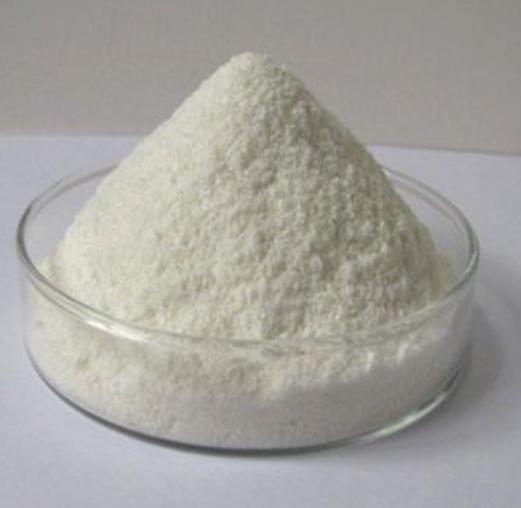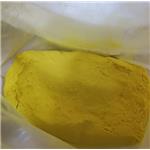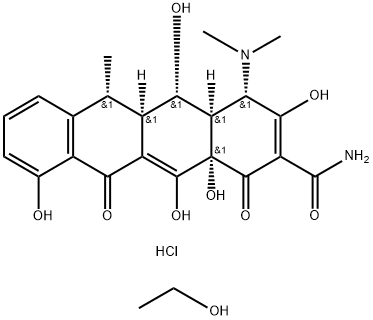Unveiling Doxycycline Hyclate: An In-Depth Analysis
Introduction
Doxycycline hyclate, a widely recognized and utilized antibiotic, plays a crucial role in the medical and chemical fields. Its broad-spectrum efficacy against a variety of bacterial infections and its unique chemical properties make it a subject of interest for professionals in the chemical domain.

Figure 1 Characteristics of Doxycycline hyclate
Properties of Doxycycline Hyclate
Doxycycline hyclate, chemically known as [4S-(4α,4aα,5aα,6β,12aα)]-4-(dimethylamino)-3,5,10,12,12a-pentahydroxy-6-methyl-1,11-dioxo-1,4,4a,5,5a,6,11,12a-octahydrotetracene-2-carboxamide monohydrate hydrochloride, exhibits several notable properties that contribute to its effectiveness and versatility.
Chemical Structure and Stability
Doxycycline hyclate is a semisynthetic tetracycline antibiotic derived from oxytetracycline. Its structure includes a four-ring system common to tetracyclines, with modifications that enhance its antimicrobial activity and pharmacokinetic properties. The hyclate form, which is the hydrochloride salt of doxycycline, improves its solubility in water, facilitating better absorption in the gastrointestinal tract.
The molecular formula of doxycycline hyclate is C22H24N2O8·HCl, and its molecular weight is approximately 512.94 g/mol. It is a yellow crystalline powder that is highly soluble in water and slightly soluble in alcohol.
Mechanism of Action
Doxycycline hyclate functions by inhibiting bacterial protein synthesis. It binds to the 30S ribosomal subunit, preventing the attachment of aminoacyl-tRNA to the ribosomal acceptor site. This action halts the addition of new amino acids to the nascent peptide chain, effectively inhibiting bacterial growth and reproduction.
Main Components of Doxycycline Hyclate
The primary component of doxycycline hyclate is doxycycline itself, which constitutes the active pharmaceutical ingredient (API). In addition to the API, commercial formulations of doxycycline hyclate may contain various excipients to enhance the stability, absorption, and palatability of the drug. These excipients include:
Microcrystalline cellulose: Used as a filler and binder.
Magnesium stearate: Acts as a lubricant to prevent tablet ingredients from sticking to manufacturing equipment.
Colloidal silicon dioxide: Used as a glidant to improve powder flowability.
Uses of Doxycycline Hyclate
Doxycycline hyclate's broad-spectrum antibacterial activity makes it a valuable therapeutic agent for a wide range of infections. Its uses span several medical fields, including dermatology, respiratory medicine, and infectious disease management.
Treatment of Bacterial Infections
Doxycycline hyclate is effective against numerous Gram-positive and Gram-negative bacteria. It is commonly prescribed for the treatment of:
Respiratory tract infections, such as bronchitis and pneumonia.
Urinary tract infections.
Skin and soft tissue infections, including acne vulgaris.
Sexually transmitted infections, including chlamydia and gonorrhea.
Tick-borne illnesses, such as Lyme disease and Rocky Mountain spotted fever.
Anti-Inflammatory and Non-Antibacterial Uses
Beyond its antibacterial properties, doxycycline hyclate exhibits anti-inflammatory effects. It is used in the treatment of inflammatory conditions such as rosacea and periodontitis. The drug's ability to inhibit matrix metalloproteinases (MMPs) makes it effective in reducing inflammation and tissue breakdown in these conditions.
Storage Requirements for Doxycycline Hyclate
Proper storage of doxycycline hyclate is essential to maintain its stability and efficacy. The drug should be stored in a well-closed container, protected from light and moisture. The recommended storage temperature is between 20°C to 25°C (68°F to 77°F), with brief exposure to temperatures ranging from 15°C to 30°C (59°F to 86°F) being permissible.
Stability Considerations
Doxycycline hyclate is sensitive to degradation by light and moisture. Exposure to these conditions can lead to the formation of degradation products, some of which may be toxic. Therefore, ensuring that the drug is stored in its original, tightly sealed container and away from direct light sources is critical.
Conclusion
Doxycycline hyclate remains a cornerstone in the arsenal of antibiotics due to its broad-spectrum activity and favorable pharmacokinetic profile. This comprehensive overview provides a foundation for further exploration and application of this versatile antibiotic in both clinical and research settings. By maintaining an awareness of the chemical and practical aspects of doxycycline hyclate, can ensure its effective and safe use, contributing to the continued success in combating bacterial infections and managing inflammatory conditions.
![Article illustration]() References
References
[1] Kogawa A C, Salgado H R N. Doxycycline hyclate: a review of properties, applications and analytical methods[J]. International Journal of Life science and Pharmaceutical Research, ISSN, 2012: 2250-0480.
[2] Sloan B, Scheinfeld N. The use and safety of doxycycline hyclate and other second-generation tetracyclines[J]. Expert opinion on drug safety, 2008, 7(5): 571-577.
);See also
Lastest Price from Doxycycline hyclate manufacturers

US $2.00/KG2024-09-19
- CAS:
- 24390-14-5
- Min. Order:
- 1KG
- Purity:
- 99 %
- Supply Ability:
- 10000kg

US $0.00/Kg/Drum2024-09-18
- CAS:
- 24390-14-5
- Min. Order:
- 25KG
- Purity:
- 88.0%~94.0%;CP2015
- Supply Ability:
- 8000kg/month


